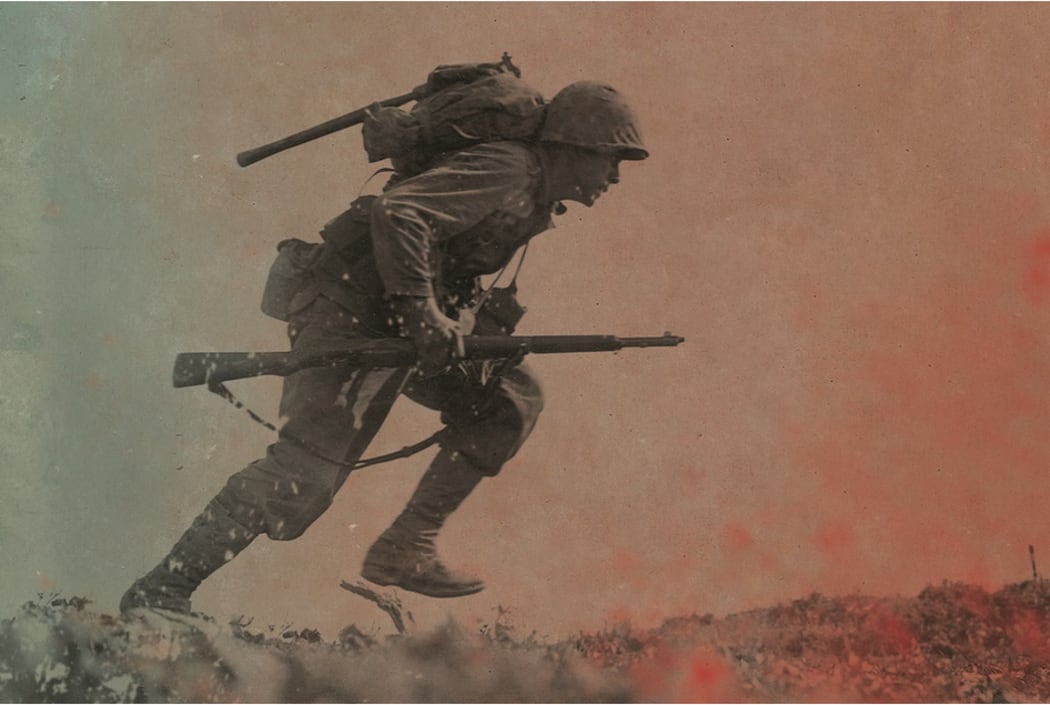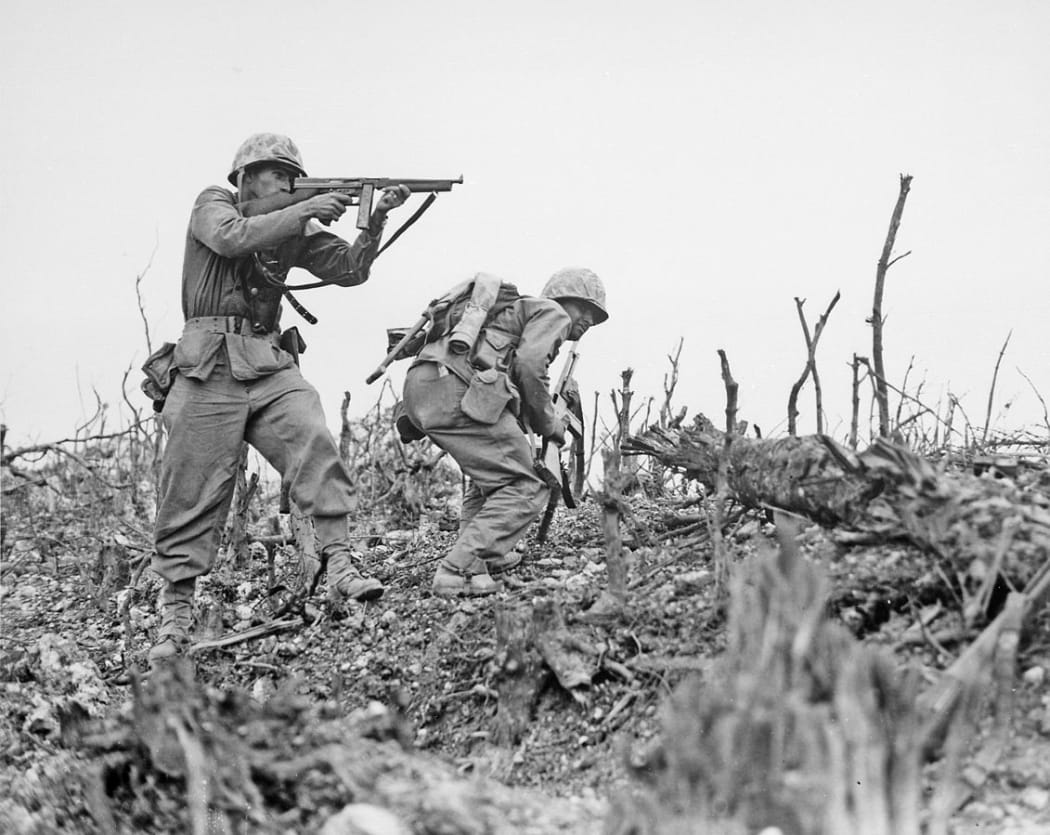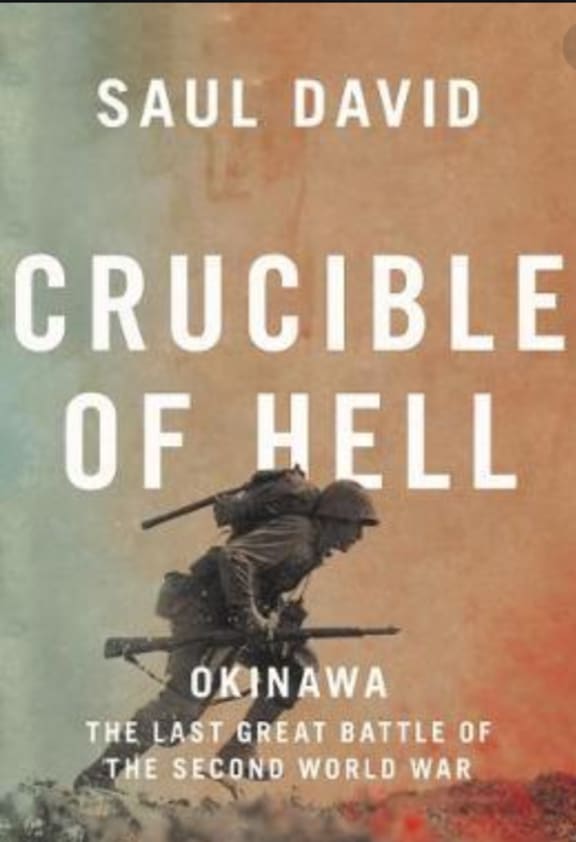Did the horrors of the Battle of Okinawa, the largest and bloodiest US military operation in the Pacific War, lead to the decision to drop the atomic bombs on Hiroshima and Nagasaki?

More than 240,000 people lost their lives in the Battle of Okinawa. Photo: Supplied
Historian Saul David believes so. In a new book, in time for the battles 75th anniversary, he argues that the ferocity of the fighting on Japan's southern outpost and the scale of the American losses led President Truman to fear that a full-scale invasion of Japan could lead to a colossal loss of life.
Years later, Truman wrote, "I knew what I was doing when I stopped the war that would have killed a half-million youngsters on both sides if those bombs had not been dropped."
David's new book, Crucible of Hell: Okinawa, the last great battle of the Second World War, tells the two stories side-by-side as the massive landing operation stalls and the battle turns to near-trench warfare against dug-in Japanese troops, set against the military and political decisions about a full invasion of Japan or whether to drop the atomic bomb.
These are cataclysmic events.
The scale of the landing was huge. Seven army divisions and 60,000 men in the landing - admittedly fewer than D-Day Normandy - supported by the entire US Pacific fleet of 1457 ships, converged on the small island of Okinawa, some 600km south of mainland Japan, from around the Pacific. Later the troops would number 180,000 on the ground and a total of 540,000 American servicemen across the army, navy and air force. If nothing else, it was an extraordinary feat of logistics.
At first, the Americans encountered little resistance. Sergeant Bob Dick in a Sherman Tank was disoriented by the lack of defenders. "The lack of any enemy seemed almost scary. What's going on, what do they have up their sleeves?" he wrote.

The Battle of Okinawa Photo: / CC
Wheeling north, the US Marines encountered some Japanese defenders but were able to overrun the defences. It was only when the US military pressed south that the scale of what faced them became apparent.
Okinawa is a small island of steep ridges and hills in the south. Into these ridges generations of Okinawans had built tunnels and burial caves. It was here that the Japanese had dug in and constructed a network of tunnels in the hills, creating a chain of linked positions across the gorges, valleys and ridges.
For nearly three blood-soaked months, both sides battered each other. The names of the ridges of Okinawa have become synonymous with carnage; Hacksaw Ridge, the Shuri Line, Cactus Ridge and Kakazu Ridge. This was almost trench warfare as soldiers slogged from foxhole to foxhole up hills or used flamethrowers and napalm to try to dislodge the defenders.
The casualty rate was immense. More than 240,000 people lost their lives on or around Okinawa, says David. "The fatalities included the vast majority of the 110,000 Japanese and Okinawan defenders, many of whom refused to surrender; 12,500 American servicemen (out of total casualties of 76,000), making it by far the bloodiest US battle of the Pacific and one of the costliest in the country's history; and most tragically 125,000 Okinawan civilians (a third of the pre-war population) who were either caught in the cross-fire or believed Japanese propaganda that it was better to commit mass suicide than be raped and murdered by the Americans."

Historian Saul David Photo: Supplied
David captures the hell of the battle. In one horrific scene, David recreates a mass suicide by Okinawans, warped by propaganda and fearful of the Americans, killing themselves by throttling children, disemboweling themselves or detonating hand grenades. On Sugar Loaf Hill, American soldiers found rotting body parts strewn around the battlefield; they collected up the limbs and left them in bags for others to sort later.
Even the deaths of the two opposing generals, Lieutenant General Mitsuru Ushijima and General Simon Bolivar Buckner, were dream-like. Ushijima committed suicide looking out at a quiet ocean scene as he waited for the Americans while Buckner, who refused to take off the General's star on his helmet, was blown up by a mortar fired by a soldier aiming at the star. He was the highest ranked US military officer killed during the war.
David's book gets down into the foxholes with soldiers, rather than the command posts with the generals. Much of the battle is recreated using the memoirs and letters of soldiers. Much of it comes from William Manchester's Goodbye, Darkness on his time of being a Marine in the Pacific.
The eye-witness accounts are gripping. In one, a company must run across sniper alley to bring supplies, only to discover they have been given the wrong gear and have to go back to do it again. You feel every volley as they run.
War still captures readers' imaginations; World War Two especially. Bookshops are still filled with accounts of wars. David's book is a good addition. The author of books on British and imperial campaigns, including the Indian Mutiny, David tries to tell the story of individuals at war but also map the wider political dimensions. His Okinawa has an epic dimension.
History, as they say, is usually written by the victors. However, David works hard to show all sides. He follows 16-year-old Kikuko Miyagi, a local student ordered to become a nurse, into the caves to treat the dying and the wounded, often operating without anaesthetic. Those they couldn't fit in the cave hospitals were left in the fields where they were often bombed again. "Gas gangrene, tetanus, and brain fever were common. Those with brain fever were no longer human beings. They'd tear their clothes off because of the pain, tear off their dressings."

The Crucible of Hell Photo: Supplied
Equally, he devotes chapters to Ushijima's second in command, Colonel Hiromichi Yahara who masterminded the defensive strategy and later wrote his own account of the battle. Yahara had to contend with fellow officers who wanted to abandon their dug-in positions for reckless and ultimately futile charges they considered glorious.
And perhaps the most gripping scenes are David's recreations of the kamikaze attacks on American ships. He tells the stories of the pilots; young, full of bravado, occasionally assailed by doubts, drinking the night before attacks and telling jokes. One proposes to his girlfriend and promises he'll be back "when it rains". Another, strapped to a torpedo submarine, feels relief and then deep shame when his attack is cancelled. On the other side, there is the fear among US sailors as wave after wave of kamikaze planes keep coming, wreaking havoc if one gets through.
It was this "crucible of hell" as David calls it that fed fears in the White House about what would happen in an invasion of mainland Japan. David, a professor of military history, focuses on Truman and his advisors grappling with the scale of an invasion; if this was the human wreckage needed to dislodge the Japanese from a small island with a couple of air bases, hundreds of kilometres from Tokyo, how much more difficult would an invasion be to oust a ferocious and dug-in Japanese military.
The battle for Okinawa finally came to an end on June 22, some 82 days after the invasion. A month later, an ultimatum was delivered to Tokyo demanding surrender. When that was rejected, plans for the dropping of the atomic bombs moved forward. The aim, wrote Secretary of War Henry Stimson, was to end the war "with the least possible cost in lives of the men in the armies."
At the surrender, US soldiers on Okinawa felt relief but no jubilation, says David. "We were going to live," wrote one. Another wrote of "an indescribable sense of relief tinged with sadness.....So many dead. So many maimed."
Review: Crucible of Hell: Okinawa, the last great battle of the Second World War, by Saul David, William Collins, 2020

